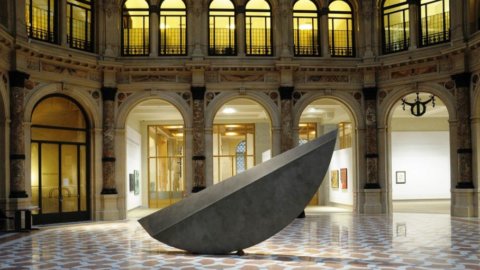Museums, historic buildings, archaeological sites: now they will be passed to "X" rays. Enea will take care of the diagnosis with a clear objective: to save on energy consumption. The reason is simple: among the most energy-intensive sectors of the Public Administration, the complex of national museums pays an energy bill of around 250 million euros every year, with consumption up 50% compared to the 80s.
That's why the Minister of Cultural Heritage Dario Franceschini he jumped at the opportunity it offered Federico Testa, president of Enea. Together they have signed a three-year memorandum of understanding which will allow the launch of projects for the assessment of the energy footprint of historic buildings and the identification of suitable efficiency measures which – according to Enea estimates – could reduce consumption by up to 30% air conditioning and cut up to 40% of those for lighting thanks to the installation of LED lamps and to the use of smart lighting technologies.
Energy check-ups, diagnostics and laser restoration, seismic protection: high technology is therefore placed at the service of the conservation and enhancement of cultural heritage. A greater burden on the energy needs of the over 5 places of Italian culture – between museums, historic buildings and archaeological areas – are above all lighting, air conditioning, security and ICT, essential services that must be redesigned to reduce consumption and ensure maximum environmental comfort for better conservation and use of works of art and structures architecture itself.
In the energy field, the agreement does not only concern efficiency interventions and ICT systems for the energy management of artistic assets, but also the diffusion of state-of-the-art technologies for theuse of renewable sources, such as for example the so-called "invisible" photovoltaic, a sort of film that can be integrated into the architectural and landscape complex, which could take advantage of the high solar radiation in the more than 1.600 hectares of archaeological areas, 80% of which in the centre-south. Furthermore, advanced training activities and actions to raise awareness of energy saving for employees and those who use the places of art are planned, which can guarantee a further reduction in consumption of 8%.
“I really think there is a huge ground to work on – underlined the Minister Franceschini in presenting the agreement – to enhance the use of new technologies in projects for the protection, conservation and enhancement of cultural heritage. A first museum where to experience the effectiveness of this agreement could be the National Gallery of Modern and Contemporary Art in Rome: a wonderful place, with very large rooms,? where the energy bill historically represents a high cost”.
“The agreement signed with the Mibact – he added Federico Testa President of Enea – opens up the protection of Italy's cultural heritage to research and innovation, which will thus have highly qualified research centres, expert personnel, laboratories, infrastructures and cutting-edge instruments at its disposal. In particular, we will collaborate to optimize the energy consumption of museums and historic buildings as we are already doing in Rome for Palazzo Montecitorio. This will allow for thefree up economic resources to be reinvested in the enhancement of cultural heritage".
The issue of energy efficiency is at the center of a further agreement between Enea and the Ministry of Agricultural Policies, Food and Forestry (MiPAAF). The agreement also provides for the promotion of the use of renewable sources in the agricultural, forestry and agro-industry sectors, optimizing consumption and improving savings, in particular of more energy-intensive activities.
According to the latest Enea Report, the Italian agricultural-food sector absorbs 13% of final energy consumption. With appropriate efficiency measures, energy consumption in irrigation could be reduced by 25% and up to 70% in ventilation and cooling systems, with a return on investment between 5 and 7 years.




